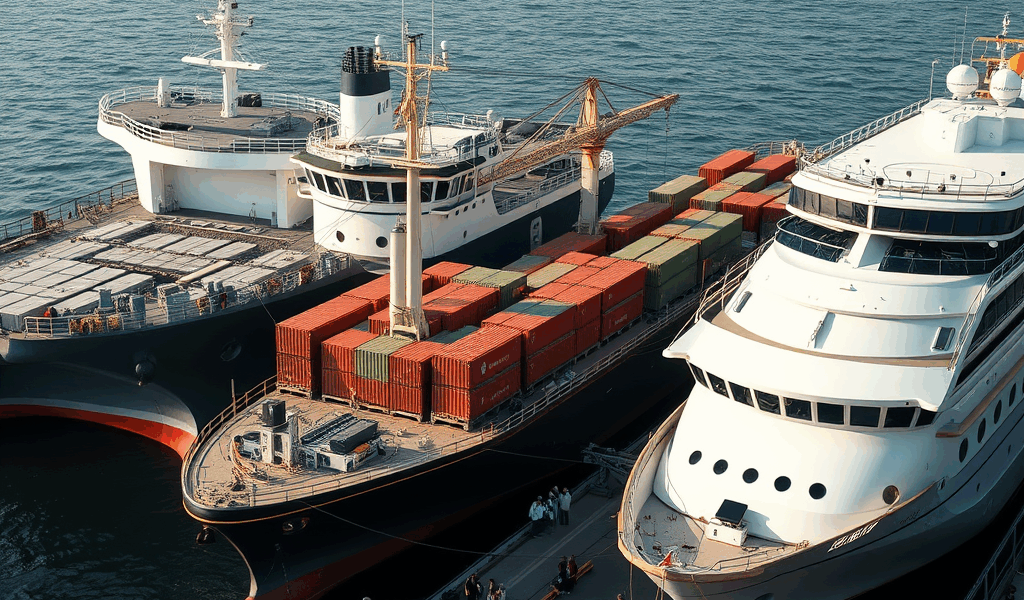Ships for Sale & Purchase
04.06.2025The maritime industry, one of the oldest and most vital segments of global trade, relies heavily on the buying and selling of vessels. The sale and purchase (S&P) market for ships can be complex, involving numerous factors and players. This guide aims to shed light on the process, key considerations, and the types of ships commonly traded.
Understanding the Ship Sale and Purchase Market
The S&P market is a dynamic environment where ships change ownership for various reasons, such as fleet renewal, financial restructuring, or strategic expansion. This market operates globally, with transactions influenced by factors like economic conditions, trade patterns, and regulatory changes.
Key Players in the Ship S&P Market
- Shipowners: Individuals or companies that own and operate vessels.
- Shipbrokers: Intermediaries who facilitate transactions between buyers and sellers. They provide market insights and negotiate terms.
- Financiers: Banks and financial institutions that provide funding for ship acquisitions.
- Legal Advisors: Experts who ensure compliance with relevant laws and regulations.
Types of Ships Commonly Sold and Purchased
1. Bulk Carriers
Bulk carriers transport unpackaged bulk cargo, such as grains, coal, and ore. They are classified by size, including Handymax, Panamax, and Capesize.
2. Tankers
These vessels carry liquid cargo, including crude oil, chemicals, and liquefied natural gas (LNG). Tankers are categorized by their size and the type of cargo they carry.
3. Container Ships
Designed for transporting containerized cargo, these ships are essential for global trade. They vary in size, from feeder ships to ultra-large container vessels (ULCVs).
4. Passenger Ships
Including ferries and cruise ships, these vessels are built to transport people. The market for passenger ships is influenced by tourism trends and regulatory standards.
5. Specialized Vessels
These include ships designed for specific purposes, such as research, offshore supply, or icebreaking. The demand for specialized vessels often reflects technological advancements and industry-specific needs.
The Sale and Purchase Process
1. Preliminary Negotiations
- Market Research: Buyers assess market conditions and identify potential vessels.
- Initial Contact: Brokers facilitate introductions between interested parties.
2. Inspection and Evaluation
- Physical Inspection: Buyers or their representatives inspect the vessel to assess its condition.
- Valuation: Determining the fair market value of the ship based on age, condition, and market trends.
3. Contractual Agreement
- Memorandum of Agreement (MOA): A legal document outlining the terms and conditions of the sale.
- Due Diligence: Legal and financial checks to ensure there are no encumbrances or liabilities.
4. Finalizing the Sale
- Delivery and Payment: The vessel is delivered to the buyer, and payment is made as agreed in the MOA.
- Transfer of Ownership: Legal transfer is completed, and the ship’s registry is updated.
Factors Influencing Ship Prices
- Age and Condition: Older ships generally have lower prices, but condition and maintenance history can affect value.
- Market Demand: Economic conditions and trade routes influence demand for specific ship types.
- Regulations: Compliance with environmental and safety regulations can impact the desirability and value of a vessel.
Conclusion
The ships for sale and purchase market is a vital component of the maritime industry, requiring careful consideration and expertise. By understanding the key players, types of vessels, and the process involved, stakeholders can navigate this market more effectively. Whether you’re a seasoned shipowner or a new investor, staying informed about market trends and regulatory changes is essential for successful transactions.

